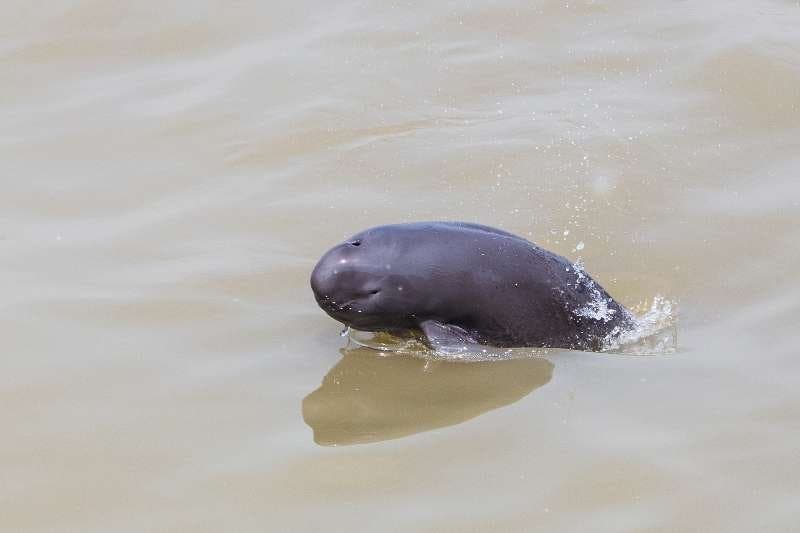The Yangtze finless porpoise is the only freshwater porpoise in the world and is critically endangered. An international group of researchers have sequenced its genome and found the gene responsible for the Yangtze porpoises’ ability to live in freshwater. From their findings, they argue that these porpoises are different enough to be considered their own species.
There are seven species of porpoises in the world. The Indo-Pacific finless porpoise (Neophocaena phocaenoides) is one of them, and it lives in East Asian waters. They lack a dorsal fin and prefer to live in shallow waters. The population that lives in the Yangtze River is the only one that lives in freshwater.

Genomic data was collected from 49 finless porpoises in East Asia. A few key changes in genes seem to be what allow the porpoises to be able to survive in freshwater. Proteins related to kidney function, involving the transportation of urea and the right balance of salts and water in the blood to live in freshwater, have been selected for in Yangtze porpoises. These changes are essential because the freshwater porpoises need to conserve salt since there isn’t nearly as much in rivers as in the ocean.
The Yangtze porpoises don’t breed with other finless porpoises and they have unique genetic adaptations for living in freshwater. They are therefore genetically distinct and haven’t interbred with other porpoises for thousands of years. The authors of the study argue that the Yangtze finless porpoise should be considered a unique incipient species.
“It has been discussed whether they were a separate species before. However, without genetic evidence to support the status as a separate species, the Yangtze river porpoises were not granted species status. Our study shows that they have unique adaptations to life in the river and are reproductively isolated form other porpoises, and should therefore be considered a separate species,” involved researcher Rasmus Nielsen, from the University of California Berkeley, to ZME Science.
Unfortunately, there are only about 1000 Yangtze porpoises left. Each year, their population declines by about 14%. To prevent it from going the way of the Yangtze river dolphin, which was declared functionally extinct in 2006, measures need to be taken to ensure that its’ food supply is there and that it isn’t being killed by other means.
“The main reasons for the Yangtze river dolphin decline seems to the same as for the the river dolphin: a combination of pollution and disturbances, habitat destruction, encounters with motorized boats, and fishing bycatches. Our study should help emphasize the importance of enacting measures to protect the river porpoises including enforcing safe fishing practices, reducing pollution and enacting habitat reconstruction projects,” said Nielsen to ZME Science.
Journal reference: Zhou et al. 2018. Population genomics of finless porpoises reveal an incipient cetacean species adapted to freshwater. Nature Communications.






